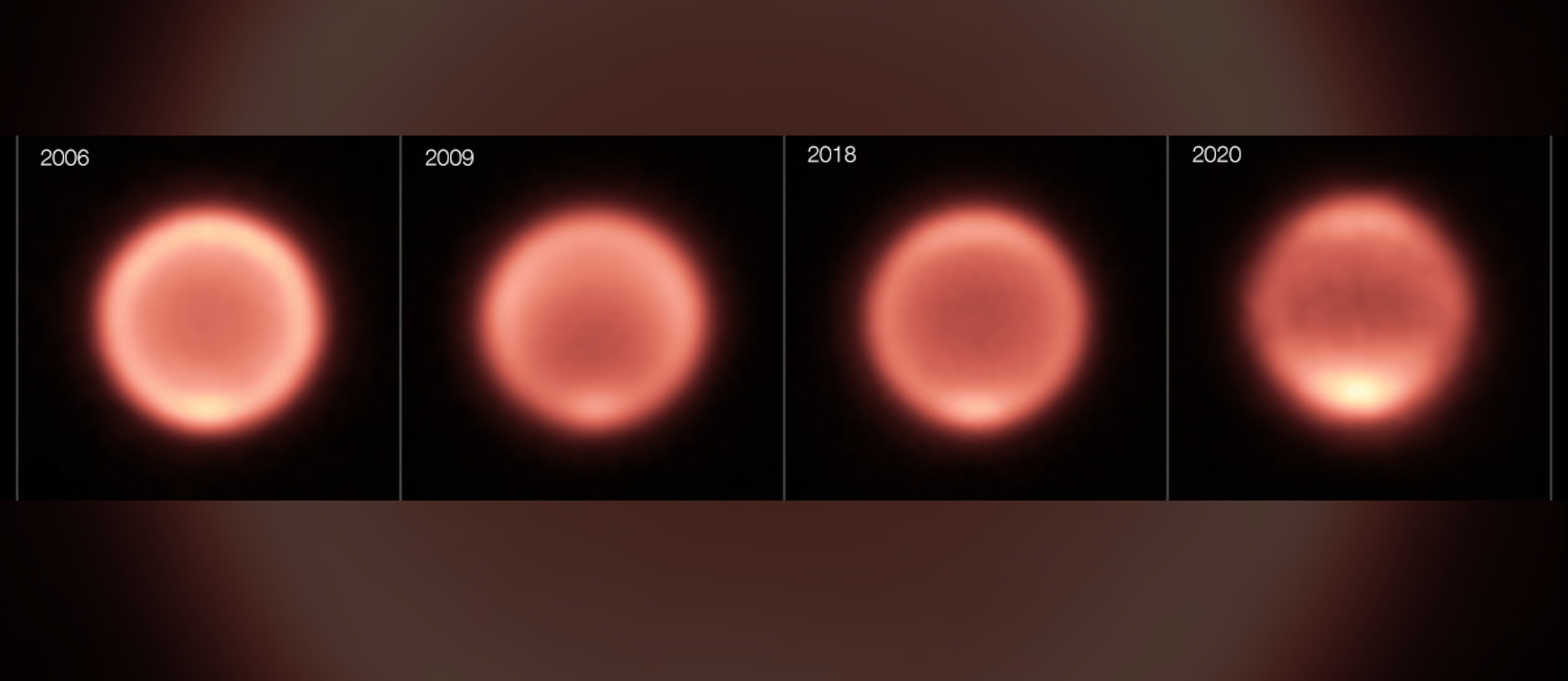Changes in the temperature of Neptune

"This change was unexpected," says Michael Roman, a research associate at the University of Leicester, United Kingdom, and lead author of the study, published today in The Planetary Science Journal. "Because we observed Neptune during its southern early summer, we expected temperatures to slowly increase, not decrease."
Like Earth, Neptune experiences seasons as it orbits the Sun. However, a season on Neptune lasts about 40 years, while a Neptune year lasts 165 Earth years. Daylight saving time has been in effect on Neptune's southern hemisphere since 2005, and the astronomers wanted to see how temperatures change after the southern summer solstice.
The scientists and researchers examined nearly 100 thermal images of Neptune taken over a 17-year period to track the overall evolution of the planet's temperature in more detail than ever before.
These data showed that most of the planet has cooled gradually over the past two decades, despite the onset of a southern summer. Neptune's global average temperature dropped by 8 °C between 2003 and 2018.
Astronomers were then surprised to discover a dramatic warming of Neptune's south pole in the last two years of their observations, as temperatures rose rapidly by 11 °C between 2018 and 2020. Although Neptune's warm polar vortex has been known for many years, such rapid warming of the pole has never before been observed on the planet.
"Our data cover less than half of one season of Neptune, so no one expected to see large and rapid changes," said co-author Glenn Orton, principal investigator at Caltech's Jet Propulsion Laboratory (JPL) in the United States.
The astronomers measured Neptune's temperature using thermal imaging cameras, which measure the infrared light emitted by astronomical objects. For their analysis, the team combined all existing images of Neptune taken by ground-based telescopes over the past two decades. They examined the infrared light emitted by a layer of Neptune's atmosphere called the stratosphere. This allowed the team to get a picture of Neptune's temperature and how it fluctuates during part of its southern summer.
Because Neptune is about 4.5 billion kilometers away and very cold - the planet's average temperature is about -220 °C - it is not easy to measure its temperature from Earth. "This kind of study is only possible with sensitive infrared images from large telescopes like the VLT that can accurately observe Neptune, and these have only been available for about 20 years," says co-author Leigh Fletcher, a professor at the University of Leicester.
About a third of all the images come from the VLT Imager and Spectrometer for mid-InfraRed (VISIR) instrument at ESO's VLT in Chile's Atacama Desert. Because of the size of the mirror and the altitude of the telescope, it has very high resolution and data quality, providing the clearest images of Neptune. The team also used data from NASA's Spitzer Space Telescope and images taken with the Gemini South telescope in Chile, as well as the Subaru telescope, Keck telescope and Gemini North telescope, all in Hawaii.
Because Neptune's temperature fluctuations were so unexpected, researchers don't yet know what might have caused them. They could be due to changes in Neptune's stratospheric chemistry, random weather patterns or even the solar cycle. More observations will be needed in the coming years to explore the reasons for these variations. Future ground-based telescopes such as ESO's Extremely Large Telescope (ELT) could observe temperature variations like these in more detail, while NASA/ESA/CSA's James Webb Space Telescope will provide unprecedented new maps of chemistry and temperature in Neptune's atmosphere.
Original publication:
Michael T. Roman et al., "Sub-Seasonal Variation in Neptune’s Mid-Infrared Emission from Ground Based Imaging", Planetary Science Journal (doi:10.3847/PSJ/ac5aa4)
www.eso.org/public/archives/releases/sciencepapers/eso2206/eso2206a.pdf













